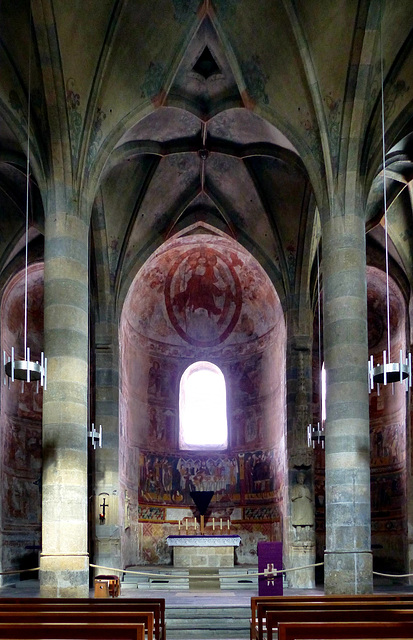Müstair - St. Johann
Müstair - St. Johann
Müstair - St. Johann
Müstair - St. Johann
Müstair - St. Johann
Müstair - St. Johann
Müstair - St. Johann
Müstair - St. Johann
Müstair - St. Johann
Müstair - St. Johann
Taufers im Münstertal - St. Johann
Taufers im Münstertal - St. Johann
Taufers im Münstertal - St. Johann
Taufers im Münstertal - St. Johann
Glurns - St. Pankratius
Glurns - Paul Flora
Glurns - Arcades
Glurns - Arcades
Glurns - Letterbox
Prad am Stilfserjoch - St. Johann
Laas - St. Sisinius
Laas - St. John the Baptist
Laas - St. John the Baptist
Müstair - St. Johann
Müstair - St. Johann
Müstair - St. Johann
Müstair - St. Johann
Müstair - St. Johann
Müstair - St. Johann
Müstair - St. Johann
Laatsch - St. Lucius
Mals - St. Martin
Mals - Maria Himmelfahrt
Mals - Maria Himmelfahrt
Mals - St. Johann
Mals - St. Benedict
Mals - St. Benedict
Marienberg
Reschensee - Bell Tower
Venezia - Canal Grande
Venezia - Tramontin
Venezia - Ospedale SS. Giovanni e Paolo
Venezia - Ospedale SS. Giovanni e Paolo
Venezia - Ospedale SS. Giovanni e Paolo
Venezia - San Zanipolo
Location
Lat, Lng:
You can copy the above to your favourite mapping app.
Address: unknown
You can copy the above to your favourite mapping app.
Address: unknown
See also...
Keywords
Authorizations, license
-
Visible by: Everyone -
All rights reserved
-
285 visits
Müstair - St. Johann


Many churches, chapels and abbeys all over continental Europe claim to be founded by Charlemagne.
Saint John Abbey in the village of Müstair (= monasterium) is - most likely - founded in deed by Charlemagne or a bishop under Charles´ order around 774. At that time Charlemagne fought war against the Langobards in Northern Italy and needed save and secure passes over the Alps for his army. Fortified monasteries played an important role in this strategy.
Dendrochronological surveys found out, that some of the beams used for the construction cut around 775, what is, when Charlemagne´s soldiers conquered the Lombardy.
The "Benediktinerinnenkloster St. Johann", today still a Benedictine nunnery, is since 1983 a UNESCO World Heritage Site.
Most spectacular is the interior of the convent´s church, that meanwhile serves the parish. It was constructed in Carolingian times, but remodelled later, when it got a late Gothic vaulted ceiling.
Around 1200 all the walls of the church and the apses were covered with Romanesque frescoes. 300 years later, they seemed "old fashioned" - and the walls got whitened. End of the 19th century art historians discovered not only the fresco paintings from 1200, there were wall paintings even from the Carolingian times, dating back to 800.
Saint John Abbey in the village of Müstair (= monasterium) is - most likely - founded in deed by Charlemagne or a bishop under Charles´ order around 774. At that time Charlemagne fought war against the Langobards in Northern Italy and needed save and secure passes over the Alps for his army. Fortified monasteries played an important role in this strategy.
Dendrochronological surveys found out, that some of the beams used for the construction cut around 775, what is, when Charlemagne´s soldiers conquered the Lombardy.
The "Benediktinerinnenkloster St. Johann", today still a Benedictine nunnery, is since 1983 a UNESCO World Heritage Site.
Most spectacular is the interior of the convent´s church, that meanwhile serves the parish. It was constructed in Carolingian times, but remodelled later, when it got a late Gothic vaulted ceiling.
Around 1200 all the walls of the church and the apses were covered with Romanesque frescoes. 300 years later, they seemed "old fashioned" - and the walls got whitened. End of the 19th century art historians discovered not only the fresco paintings from 1200, there were wall paintings even from the Carolingian times, dating back to 800.
- Keyboard shortcuts:
Jump to top
RSS feed- Latest comments - Subscribe to the comment feeds of this photo
- ipernity © 2007-2025
- Help & Contact
|
Club news
|
About ipernity
|
History |
ipernity Club & Prices |
Guide of good conduct
Donate | Group guidelines | Privacy policy | Terms of use | Statutes | In memoria -
Facebook
Twitter

Sign-in to write a comment.